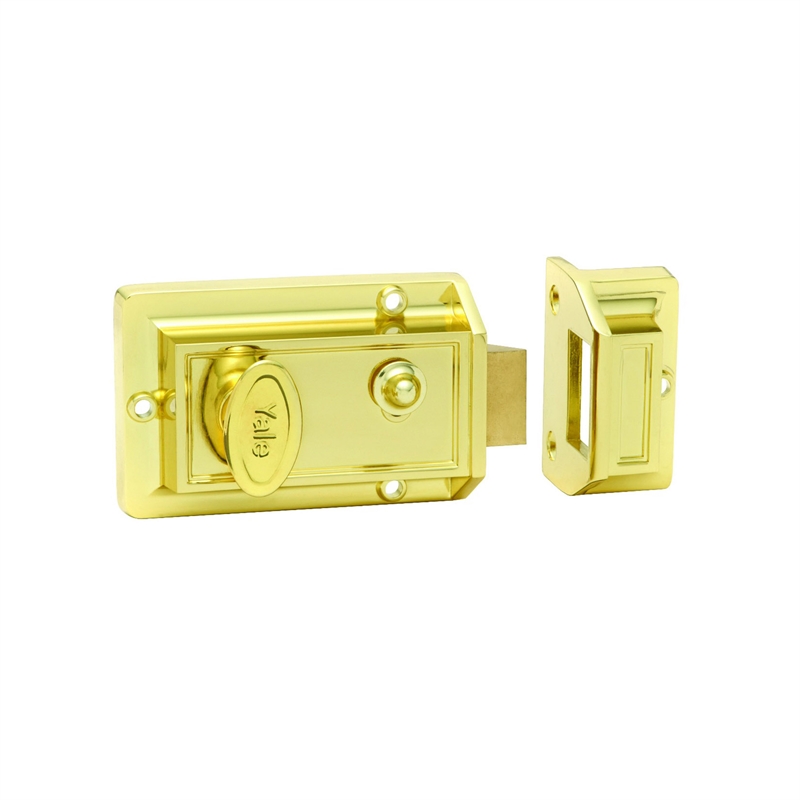

Then slip the lock box over the shank and wiggle it back into place over the shank and back plate. Push the new cylinder or barrel back through the door and screw it to the back plate using the long screws you took out. Re assembling the lock is now a direct reversal of the procedure you used to dismantle it. When you have sawn a little way through the shank you should be able to bend it downwards to allow the shank to split in the correct place.Ĭompare old to new barrel and cut off shank of new lock to the same length as the old one Re–assembling a Barrel or Yale Lock The grooves which are already partially cut in in the shank are there to help you. Measure the length of the shank and using a strong pair of pliers and a hacksaw, cut the new shank to the same length as the old. Take a new barrel or cylinder from the packet and lay it alongside the one you have just taken out. Recently our product packaging has been changed to reflect this. Yale's long standing history and experiance in the manufacture of nightlatches means that the locks are commonly referred to as 'Yale locks'. Un-screwing bolts holding lock barrel to back plateīarrel removed and showing how it’s fixed to back plate through the door Nightlatch Yale has a comprehensive range of nightlatches suitable for all applications and security needs. You should then be able to pull the barrel or cylinder out of the door. Yale offers a wide range of nightlataches including locks to meet BS 3621 & BS 8621. Unscrew these screws and put them with the lock box screws (seen in below image). Above the shank and to either side of it are two screw heads, usually brass, which hold the barrel or cylinder to the back plate (seen in the above image). This RCN8160 lock replaces the Yale 77 style door lock and is suitable for any 45mm thick wooden door and is generally for wooden doors with broader side. Sticking out of the back plate you will see a thin bar with grooves across its width. This is the plate which holds the whole lot to the door. When the lock box is removed you will see the locks back plate. You will then be able to wiggle off the lock box. Release these screws completely and put them somewhere safe. This is held on by two screws which are located above and below the actual door latch. The images below show the sequence involved in changing a yale lock or night latch cylinder and they should be used with the following instructions.Īt the back of the door you will see the lock box. This allows you to use a new key which after all is the usual purpose of changing locks.įront view of Yale lock Changing or Replacing a Barrel Lock

This lock is actually called a night latch and the whole assembly does not need to be changed as the internal working latch, barrel or cylinder, can be changed independently of the rest of the mechanism. Night Latches ERA Polished Chrome Double Locking BS Night Latch Yale 85/89 Matt Grey Deadlock Night Latch ERA Double Locking Night Latch Dual-Tone Brass. The easiest lock to change is what is commonly called the Yale lock or barrel lock. Maybe you have lost your keys or want to prevent an ex partner from getting in. If you are replacing your nightlatch make sure you buy one that is certificated to BS 3621.Locks like this will be marked by the British Standard Kitemark.There are any number of reasons why you may need to change the locks at home. that are easy to see at night YRD-216-HA-2605 YRD216-HA-2605 Security: Lock. Rim Nightlatches – BS 3621 Insurance Rated Yale Locks & Hardware Yale Assure Lock Z.

It is very common to fit a cylinder pull to assist with closing the door and these are available in matching finishes. On this type of nightlatch the latch bolt can also be deadlocked by the key from outside or the key from the inside. The holdback facility can be operated by rotating the handle and depressing the pushbutton and then released by rotating the handle again. A wide range of Yale Night Latches at Toolstation from only £12.98 Available in store for collection and for next day delivery. Chrome and nickel look great in modern interiors and brass is warm and more suited to a traditional or classic decor. See our comprehensive range in both narrow and standard sizes in all finishes to complement your interior. A nightlatch should be supplemented by one or two deadlocks. The latch can be deadlocked in an open or closed position by sliding the snib on the inner face. A key is required to unlock them from the outside. You can close the door by simply pushing the door into its frame. As you turn the inside knob the latch is withdrawn into the casing. The main latch bolt in a nightlatch has a rounded leading edge and is spring loaded.


 0 kommentar(er)
0 kommentar(er)
